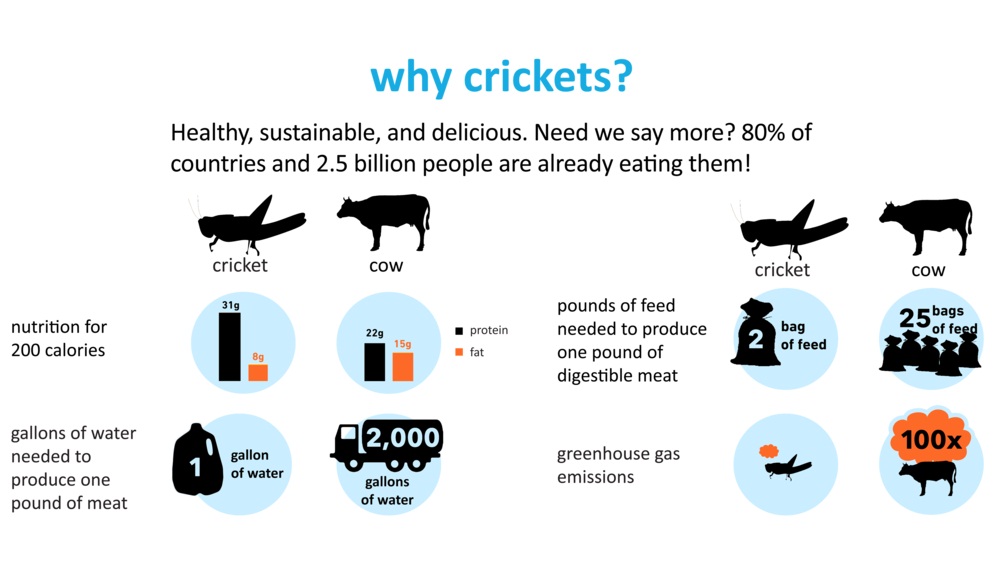
The problem – Trends towards 2050 predict a steady population increase to 9 billion people. To accommodate this number, current food production will need to almost double. Scarcities of agricultural land, water, forest, fishery and biodiversity resources, as well as nutrients and non-renewable energy are foreseen.
The solution – In 2013, United Nation’s Food and Agriculture Organization recommended eating insects to help tackle food and nutrition challenges of today and tomorrow. While the idea of eating a worm, grasshopper or cicada at every meal may seem strange, FAO insisted this had many benefits. Insects are high in protein, fat and mineral contents. They can be eaten whole or ground into a powder or paste, and incorporated into other foods.
Farming insects for human and animal consumption is particularly relevant at a time when population growth, urbanization, and the rising middle class have increased the demand for food while simultaneously harming the environment that enables its production. The world’s livestock are responsible for 18% of greenhouse gases. Raising an insects is sustainable, raising livestock is not.
The implementation – In 2014, three Harvard University graduates, Laura D’Asaro, Rose Wang and Merly Natow started Six Foods to make insects a part of standard American diet by creating cricket chips and cookies.
“At Six Foods, we know insects are the future of food, and we are here to give you a taste of what’s coming up. Chirps are made with a mix of wholesome beans, corn, peas, chia seeds, and of course cricket flour. Our Chirps have 3x more protein, and 40% less fat than your regular potato chips. Plus they are gluten-free, all natural, and in just one serving you get 6 grams of protein. That’s more than an egg,” says Six Foods’ website.
Disgusted or put off? – You already eat bugs, and you don’t even know it! There are tons of foods that are permitted by the FDA and other governing bodies that contain bits of bugs.
“If you can’t seem to get past the ick factor of eating insects, we urge you to stop envisioning the whole bodied insect—eyes, legs and all. Instead, think of insects as a simple, versatile ingredient,” the women write.
Insects currently supplement the diets of some 2 billion people and have always been part of human diets in Asia, Africa and Latin America. Of the 1 million known insect species, 1900 are consumed by humans. Some of the most consumed insects include beetles, caterpillars, bees, wasps, ants, grasshoppers, locusts and crickets.
This Article (Food Security: Healthy, Sustainable, Delicious Cricket Chirps Debut In America) is free and open source. You have permission to republish this article under a Creative Commons license with attribution to the author and AnonHQ.com.







